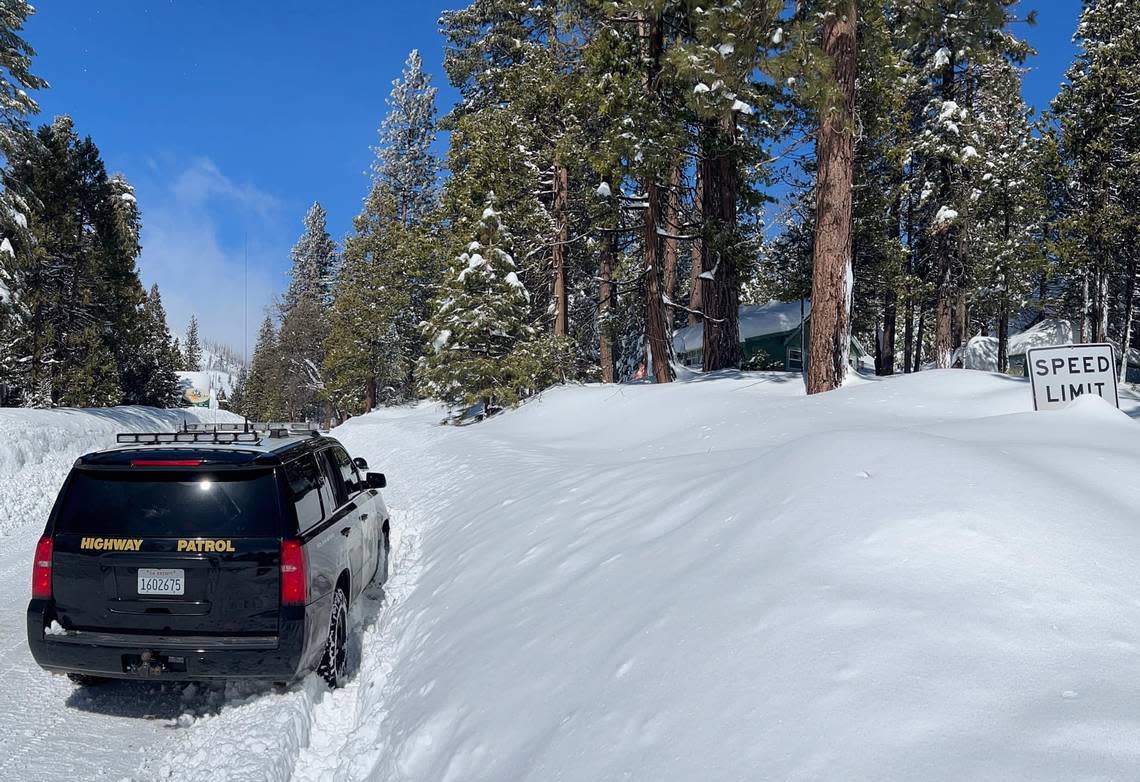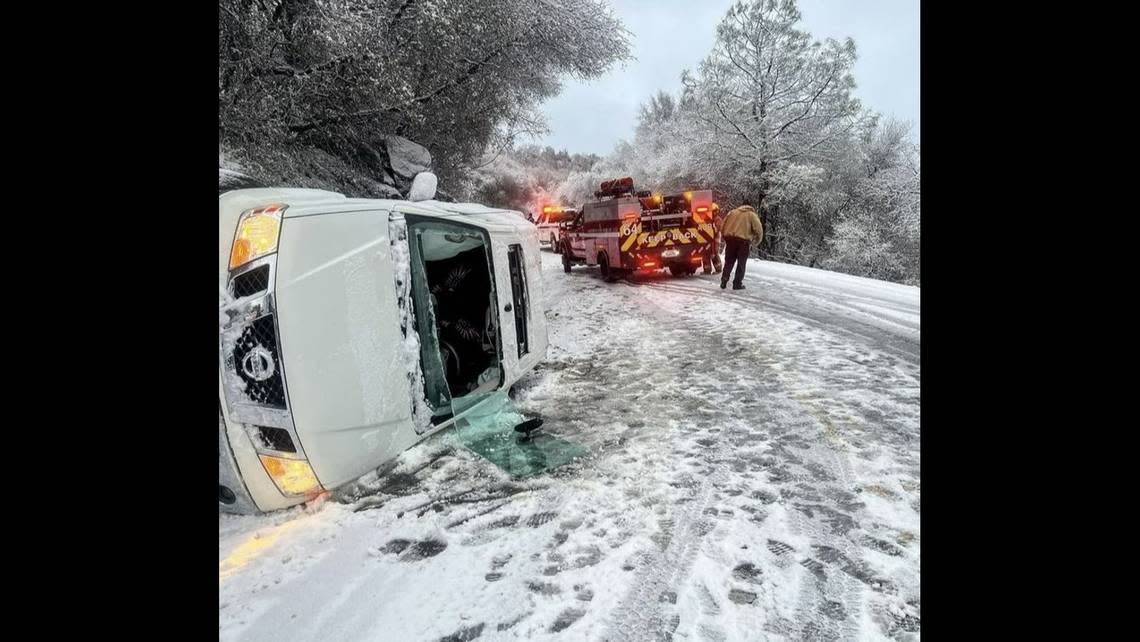Fresno County mountain towns hammered by snow. Why aren’t they on California’s emergency list?
California Gov. Gavin Newsom’s declaration Wednesday proclaiming a state of emergency in 13 counties hit hard by recent rain and snowstorms aims to support disaster response efforts. That includes Madera, Mariposa and Tulare counties.
But conspicuous in its absence is Fresno County, where towns in the Sierra Nevada range were hammered by snowfall over the past week, leaving many mountain residents isolated and without electricity.
“These storms damaged and forced the closure of federal and state highways and roads, and continue to threaten critical infrastructure,” Newsom’s proclamation states. “These storms resulted in and continue to threaten power outages, have forced evacuations, and have stranded residents and motorists in impacted counties” with more storms expected in the coming days.
The governor’s proclamation opens the door to resources and assistance to help local counties cope with the severe winter storms. The counties included in the declaration are Amador, Kern, Los Angeles, Madera, Mariposa, Mono, Nevada, San Bernardino, San Luis Obispo, Santa Barbara, Sierra, Sonoma and Tulare counties.
So why was Fresno not on the list?
“Those 13 counties were counties that declared a local county-level state of emergency and requested aid from the state,” said Brian Ferguson, a spokesperson for the California Office of Emergency Services. “Additional counties can be added later if conditions warrant.”
Fresno County initially declared a state of emergency in early January, after heavy rain and snow inundated the county and much of the central San Joaquin Valley. The county’s Board of Supervisors on Tuesday approved a resolution that the previous “local emergency shall be deemed to continue to exist until its termination is proclaimed by the Board of Supervisors.”
“It is requested that the Governor of California continue to make available assistance programs” including California Disaster Assistance aid “and continue to request additional federal assistance programs to provide relief assistance to pubic agencies that are impacted by this disaster.”
Fresno County reissues a specific emergency declaration
Tuesday’s action by Fresno County supervisors effectively represents an open-ended extension of its January emergency request. The board is required by county ordinance “to review the need to continue the local emergency at least once every 60 days until terminated,” County Administrative Officer Paul Nerland told the supervisors in a staff report. “The local emergency must be terminated at the earliest possible date when conditions warranting the proclamation have ended.”
But what the state is looking for is a discrete emergency declaration tied directly to the recent storms.
“How these typically work is that a local state of emergency tied to a geographical time frame or a specific storm system,” Ferguson said. “They need to declare a state of emergency related to these particular late February and early March storms. They can’t just have a state of emergency and leave it open.”
Early on Thursday, Nerland — who also serves as the county’s emergency services director — issued a new state-of-emergency proclamation related to the latest storms. That proclamation will go to the governor, and county supervisors would be asked to retroactively ratify the declaration at a special meeting next week.
“We’ve had extreme impacts in our mountain areas with power outages, not only in Fresno County but throughout the Valley,” said Sonja Dosti, a spokesperson for the county. “We need this declaration so we can get reimbursed for the costs of dealing with these snowstorms.”
What’s already happening
In a statement Thursday, Dosti noted that the latest proclamation is “to address extensive weather-related damage as well as future damage from the snow melt, debris flow and flooding throughout the 6,011 square miles of the county.”
The county’s response involves Fresno County’s Sheriff’s, Public Works, Planning, Public Health, Social Services and Internal Services departments; Cal Fire, the California Highway Patrol, Caltrans, Pacific Gas & Electric Co., Southern California Edison, the National Weather Service, the National Forest Service and other agencies. “All agencies are collaborating around the clock to provide updates, assist residents and facilitate repairs,” Dosti reported.
The county is updating its emergency services web page, www.fresnocountyca.gov/emergency, as well as its social media platforms, with information on road conditions, availability of sandbags, power outages, evacuation areas, emergency shelters and weather.
Residents can also download the Everbridge mobile app to receive emergency information from the Fresno County Sheriff’s Office and report road hazards and other problems through the Fresno County Connect app available through app stores.


